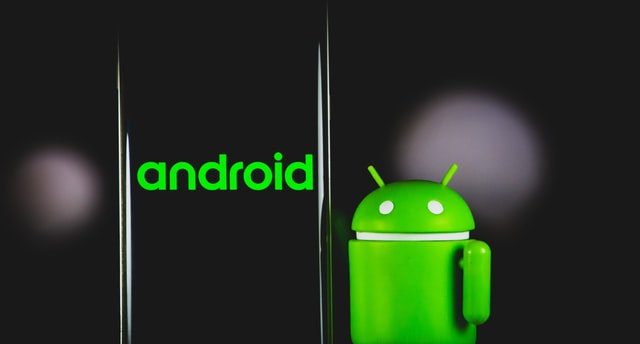Flutter is an open-source mobile app SDK for iOS and Android that is powered by Google’s Dart programming language. Flutter can be used to develop applications that run on both iOS and Android.
The following are some of the most important differences between Swift and Flutter:
– Swift is a complete programming language whereas Flutter only has a framework which relies on other languages like Dart or Kotlin to do the heavy lifting.
– Swift has been around for much longer than Flutter, which means there are more resources available online to help with development.
It’s not unexpected that iOS app development is becoming easier as more tools and technologies are developed to deal with the complexities of the platform. Choosing the finest technologies, on the other hand, can be difficult.
Are you unsure how to construct cross-platform apps using the native programming language (Swift) and frameworks? We’ve put up this in-depth comparison to help you figure out which option is best for you.
What is Swift?
Because of the expressive and succinct syntaxes, it provides an interactive and simple programming interface. Swift is a modern programming language that is quick, type-safe, and adapts to new development trends. It is compatible with Apple’s Cocoa and Cocoa Touch frameworks, as well as existing Objective-C code for Apple development.
What exactly is Flutter?
Flutter is a Google-powered cross-platform software development SDK. Developers may utilise it for Android, Windows, macOS, Linux, Google Fushia, and more, in addition to iOS app development. The Dart programming language is used by Flutter to create Android and iOS apps.
The majority of cross-platform development frameworks are criticised for their lack of reliability and performance. Flutter, on the other hand, was built with four key pillars in mind: speed, beauty, productivity, and open-source. Flutter is one of the top cross-platform programming tools in terms of performance.
On the basis of several characteristics, here’s a full comparison of native app development using Swift vs. Flutter development.
1. The Process of Onboarding
Onboarding entails early project setup whenever you engage dedicated iOS developers, depending on the development project.
To create an iOS app, Flutter requires Xcode and Flutter binaries. However, depending on the requirements, different tools such as Android Studio, IntelliJ IDEA, and others can be used. To establish the setup for development, consult the extensive “getting started” guide given by macOS.
2. Development Time
For most firms, the time it takes to turn an app idea into reality is a key worry. Because this has an impact on your development decisions, comparing tools based on this criterion is critical.
Flutter allows you to estimate the time it takes to develop any project you’re working on. All you have to do is run a code. In general, producing an iOS app with Flutter takes longer than developing one with Swift. Flutter, on the other hand, may gain speed after the initial clean builds are completed.
3. Time it takes for an app to reload
One of the most useful features of Flutter for iOS app developers is its Hot Reload feature. It only takes a few seconds to update all of your app’s changes. The results of modified codes can be seen in real time by developers. The development process is sped up as a result of this.
There are several changes while utilising Swift, such as button names, data, and accessibility. You must, however, personally verify that the changes are reflected on the device or simulator. Additionally, the reloading capability aids in real-time understanding of changes.
4. Evaluation
Even the best iOS apps will fail if they are not thoroughly tested. As a result, you should consider it when selecting development tools for your applications.
Flutter includes a solid testing framework as part of its development toolkit. Since the inception, it has aided in the creation of cleaner code. It also contains a number of other capabilities that make unit testing easier and enable for the testing of multiple functionalities. Flutter follows a dependable, quick documentation methodology that developers can rely on at all stages.
5. Incorporation
The importance of integration in the app development process cannot be overstated.
Nevercode can be used to integrate Dart apps (for Flutter). The Codemagic CI/CD tool allows for smooth integration. It’s built on continuous integration, which makes the process go more smoothly and quickly.
6. Adaptability
As an iOS app development business, we recognise the importance of considering a variety of criteria while selecting development tools. One of them is accessibility. Making programmes accessible to disabled users is not only ethical, but also cost-effective. It will give your application a “feel good” factor and add stars during marketing.
7. App Dimensions
When choosing tools for your iPhone app development, the size of the app is an important factor to consider. The majority of consumers are concerned about how much storage space an app consumes. Because iPhone storage is often restricted, you’ll want to make sure your apps are simple to download.
As previously said, Flutter develops iOS apps with Dart, and Dart apps are typically larger than those created with other development tools. Flutter apps can’t be less than a certain size due to the Dart engine’s size.
Conclusion
We understand. You must be pressed for time to select the ideal programming tool. It’s crucial to note, however, that this was a comparison of a native programming language with a cross-platform development framework.
We discovered many instances when Swift was preferable to Flutter. However, depending on the development requirements, the best option may differ. Before making any judgments, we recommend that you thoroughly grasp your project. We hope the highlights we discussed offered you a better understanding of the two development tools.

